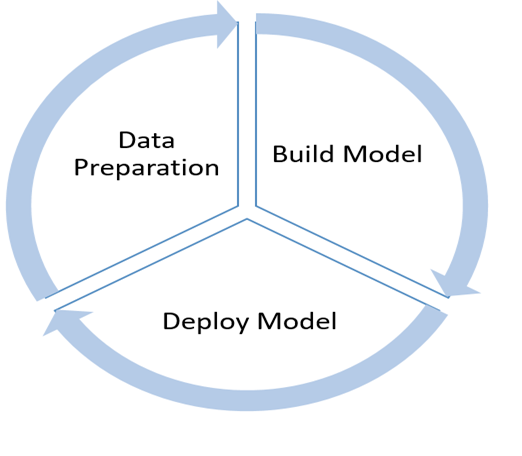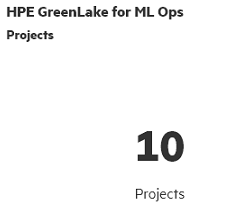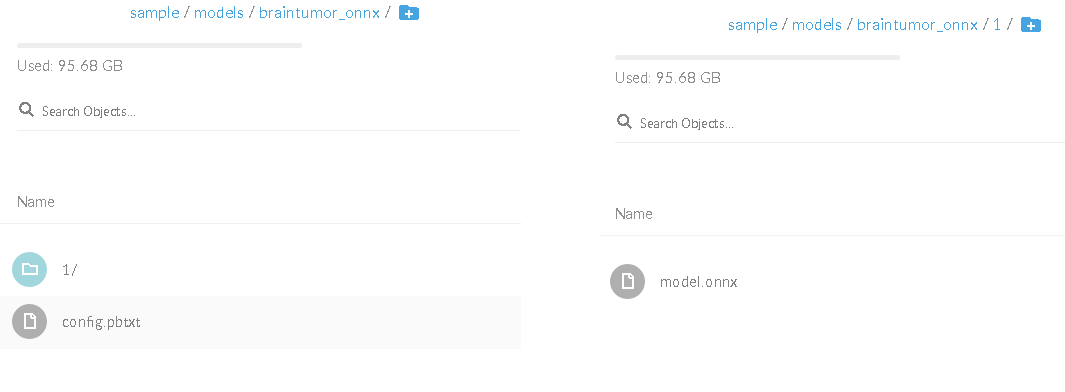Overview
HPE GreenLake Central is an advanced software-as-a-service platform that provides you with a consistent cloud experience for all your applications and data on-premises or off-premises. It provides you with insights and controls to manage your hybrid IT estate, complementing your use of public clouds and data centers. HPE GreenLake Central gives you the ability to choose where and how to place your workloads and data, and through the services you purchase enables you to monitor security, capacity, resource utilization, and costs.
HPE GreenLake for ML Ops is an on-premises, enterprise-grade ML service, enabling developers and data scientists to rapidly build, train, and deploy ML models from pilot to production, at any scale.
This preconfigured solution comprises an optimized hardware stack and is powered by HPE Ezmeral Runtime Enterprise. It provides data scientists with self-service access to a sandbox environment for prototyping and testing, to eliminate IT provisioning delays, ensure repeatability, and accelerate time-to-value. As a fully managed solution, the HPE GreenLake for ML Ops offering frees IT from routine infrastructure management tasks.
Machine learning Lifecycle

The ML project life cycle can generally be divided into three main stages: data preparation, model creation, and deployment. All three of these components are essential for creating quality models that will bring added value to your business. This process is cyclical because the insights gained from the existing model will help define the next model to be deployed.
In this article, I will focus on optimal model identified after data preparation and building model. More specifically, as an example, I will show you how to deploy a sample ONNX model available in Kubernetes native MinIO Object storage, using Triton Inference Server.
Triton Inference server supports deployment of any AI model from multiple deep learning and machine learning frameworks, including TensorRT, TensorFlow, PyTorch, ONNX, OpenVINO, Python, RAPIDS FIL, and more. Triton delivers optimized performance for many query types, including real time, batched, ensembles and audio/video streaming. To learn more about Triton Inference server, refer to the References section at the end of the post.
HPE GreenLake for ML Ops platform allows customers to host their favorite cloud native applications, like MLflow, Minio, etc.
Pre-requisites
An active service subscription to HPE GreenLake for ML Ops
An ML Ops project that has been created by an ML Ops admin for which the user is able to launch to HPE Ezmeral Runtime Enterprise through an ML Ops Project Member role
Available access credentials to any S3 based object storage
Triton Inference Server container image accessible either through on-prem registry (eg Harbor) or public registry accessible.
Steps to deploy a model
Step 1: Validation connection to Kubernetes cluster
Click HPE GreenLake for ML Ops card in the HPE GreenLake Central Dashboard, which shows the number of previously created projects.

Click link “Launch ML Operations Console”
Click “Dashboard” on left navigation of “Ezmeral Container Platform”
Download “kubectl”, “HPE kubectl plugin”, and “kubeconfig”
Set environment variable KUBECONFIG to point to the kubeconfig file
Validate connectivity to the cluster using command “kubectl get no”
Step 2: Place the model in S3 object storage
Place the model and configuration file for Triton Inference server in object storage

Sample configuration file for the model as shown below:
name: "braintumor_onnx" platform: "onnxruntime_onnx" max_batch_size : 0 input [ { name: "input_1" data_type: TYPE_FP32 dims: \[ 100, 128, 128, 2 ] } ] output [ { name: "conv2d_22" data_type: TYPE_FP32 dims: \[ -1, 128, 128, 4 ] } ]
Step 3: Create a namespace and secret for object storage credentials using the commands shown below:
kubectl create namespace triton kubectl create secret generic minio_cred –from-literal=AWS_ACCESS_KEY_ID=<specify_access_key> --from-literal=AWS_SECRET_ACCESS_KEY=<specify_secret_access_key> -n triton
Step 4: Create a deployment to host the model and check the pods and services are running
--- apiVersion: apps/v1 kind: Deployment metadata: labels: app: triton name: triton namespace: triton spec: replicas: 1 selector: matchLabels: app: triton template: metadata: labels: app: triton spec: containers: - image: nvcr.io/nvidia/tritonserver:21.10-py3 name: tritonservercont command: ["/bin/bash"] args: ["-c", "/opt/tritonserver/bin/tritonserver --model-repository=s3://https://<objectstoreurl.com:port>/sample/models --strict-model-config=false"] env: - name: AWS_ACCESS_KEY_ID valueFrom: secretKeyRef: name: minio-cred key: AWS_ACCESS_KEY_ID - name : AWS_SECRET_ACCESS_KEY valueFrom: secretKeyRef: name: minio-cred key: AWS_SECRET_ACCESS_KEY ports: - containerPort: 8000 name: http - containerPort: 8001 name: grpc - containerPort: 8002 name: metrics volumeMounts: - mountPath: /dev/shm name: dshm resources: requests: cpu: 2 memory: 8Gi nvidia.com/gpu: 1 limits: cpu: 2 memory: 16Gi nvidia.com/gpu: 1 volumes: - name: dshm emptyDir: medium: Memory securityContext: runAsUser: 1000 fsGroup: 1000 nodeSelector: gl.hpe.com/instance-type: GL-GP-MLi-Metal --- apiVersion: v1 kind: Service metadata: name: triton namespace: triton labels: hpecp.hpe.com/hpecp-internal-gateway: "true" spec: type: NodePort selector: app: triton ports: - protocol: TCP name: http port: 8000 nodePort: 30850 targetPort: 8000 - protocol: TCP name: grpc port: 8001 nodePort: 30851 targetPort: 8001 - protocol: TCP name: metrics nodePort: 30852 port: 8002 targetPort: 8002
Notes:
- In the above YAML, replace <objectstoreurl.com:port> and model path with actual object store URL, model sub path. Model refers to location where model and associated configuration is placed.
- Node selector “gl.hpe.com/instance-type: GL-GP-MLi-Metal” is used to place the workload in inference cluster
- Check that the pods and service are running using the commands shown below:
kubectl get po –n triton kubectl get svc –n triton
- Service labels hpecp.hpe.com/hpecp-internal-gateway: "true" is placed to get a gateway endpoint to access the Triton Inference server outside the cluster. To find the endpoint, run this command:
kubectl describe svc <service_name> -n triton
- Check the metrics endpoints for models hosted in Triton Inference server are accessible:
kubectl describe svc <service_name> -n triton
Next steps
Once the production model is hosted, then any application can perform inference on the model hosted by Triton inference server. For more on Triton client libraries, refer to the section below.
References
Related
A guide to enabling a managed Istio service mesh in a Kubernetes cluster on HPE GreenLake for Private Cloud Enterprise
Feb 16, 2023Using HPE GreenLake Console's API Gateway for Data Services Cloud Console
Nov 30, 2021Automate ITOps: announcing foundational APIs for the HPE GreenLake edge-to-cloud platform
Dec 1, 2023
Bare metal provisioning on HPE GreenLake using Terraform
Mar 20, 2023
Bulk onboarding of users in HPE GreenLake edge-to-cloud platform
Apr 24, 2024
Configuring Azure AD as the SAML IDP with HPE Greenlake Cloud Platform and Aruba Central
Jul 11, 2022How to implement a single sign-on solution to authenticate users onto the HPE GreenLake edge-to-cloud platform
Nov 29, 2023